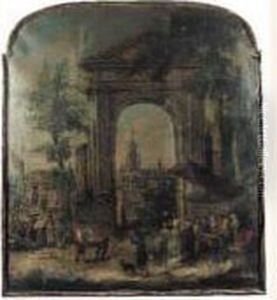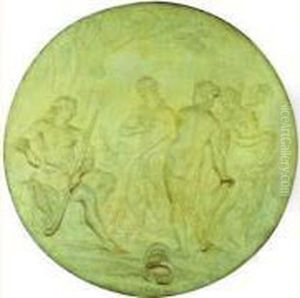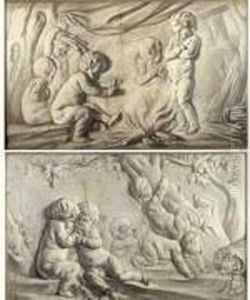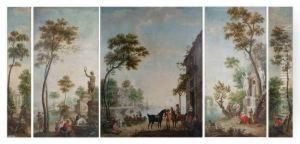Petrus Norbertus Van Reysschoot Paintings
Petrus Norbertus Van Reysschoot, born in 1738 in Ghent, was a Flemish painter known for his contributions to still-life and portrait painting during the 18th century. Coming from a family with artistic roots, Van Reysschoot was immersed in the world of art from an early age. His father, Norbert van Reysschoot, was also a painter, which undoubtedly influenced Petrus Norbertus's career choice and development as an artist.
Van Reysschoot's early life was marked by rigorous training and dedication to mastering his craft. He likely received his initial artistic education from his father, which was common practice at the time. This early exposure to the fundamentals of painting laid the groundwork for his future success. As he matured as an artist, Van Reysschoot became adept at capturing the intricate details of his subjects, whether they were the delicate petals of a flower in a still life or the nuanced expressions of a sitter in a portrait.
Throughout his career, Van Reysschoot enjoyed considerable success and recognition. His works were appreciated for their attention to detail, vibrant colors, and the lifelike quality of his depictions. Despite the popularity of his paintings, specific details about his life and career remain somewhat obscure, a common issue for many artists of his time. However, his surviving works continue to be studied and admired for their contribution to Flemish art.
Van Reysschoot's contributions to the art world extended beyond his personal creations. He was part of the larger movement of 18th-century Flemish painters who played a significant role in the continuation and development of still-life and portrait painting traditions in Europe. His works not only reflect the artistic trends of his time but also provide insight into the social and cultural contexts in which he lived.
Petrus Norbertus Van Reysschoot passed away in 1795, leaving behind a legacy that has endured through the centuries. His paintings, while not as widely recognized as those of some of his contemporaries, continue to be appreciated by art historians and collectors for their beauty and technical skill. Through his contributions to the arts, Van Reysschoot remains an important figure in the history of Flemish painting.




